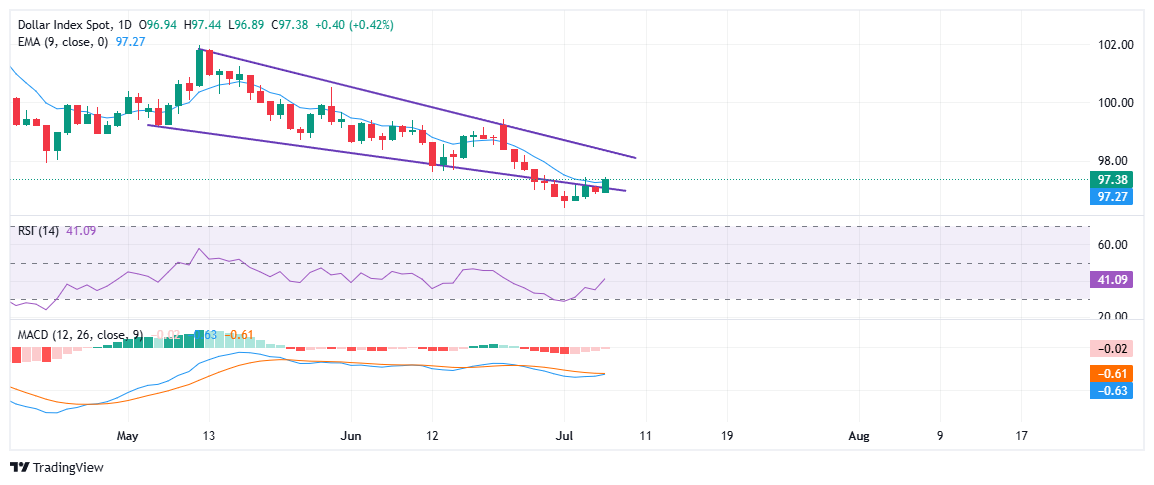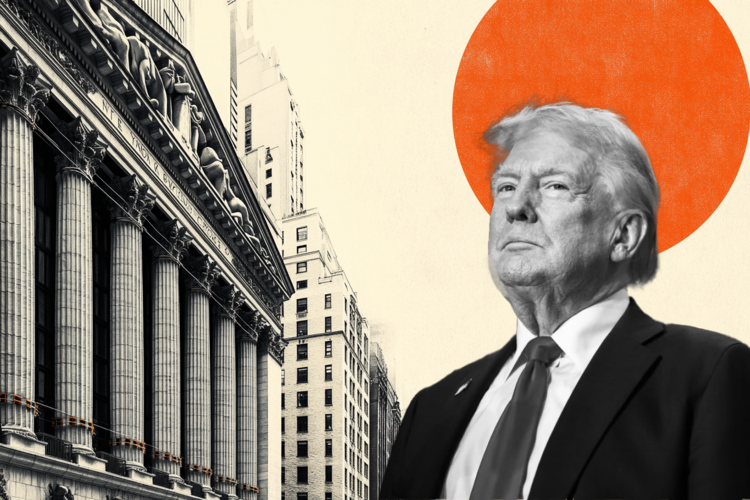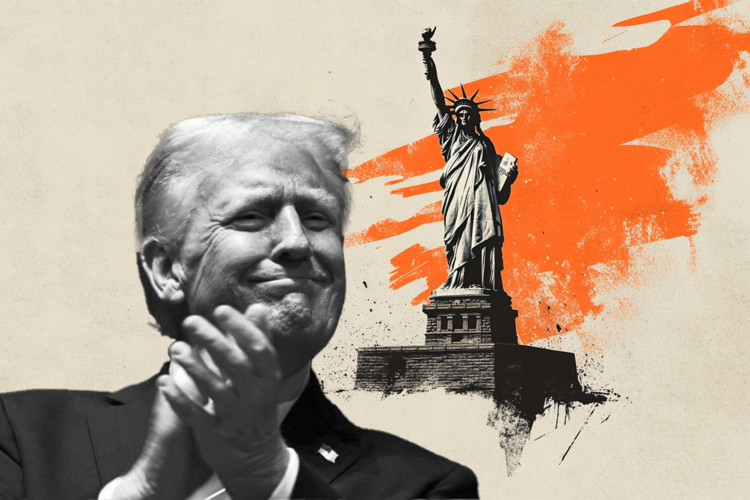- The US dollar begins upward, backed by safe refuge flows amid fears due to tariffs.
- The US is ready to formally notify more than 100 countries on new tariffs before July 9, with scheduled implementation for August 1.
- The US dollar (DXY) re -enters a descending wedge pattern, with the RSI and the MACD showing signs of a developing bunder impulse.
The US dollar (USD) Start the Week with a firmer foot in front of its main peers, supported by the demand for safe refuge and the reduction of the probabilities of interest rate cuts by the Federal Reserve (Fed) in the short term. The feeling of risk deteriorates as the markets prepare for the deadline of July 9, when the United States (USA) is expected to formally notify its commercial partners over new tariffs that could reach up to 70%, aimed at more than 100 countries.
The US dollar index (DXY), which measures the value of the dollar against a basket of six main currencies, is going up during the first hours of negotiation in the US at the time of writing, the index is quoted around 97.40, near the maximum of last week, and rises 0.45% in the day, since investors prefer the US dollar in the middle of persistent global commercial tensions. A feeling of cautious market.
With the deadline of July 9, around the corner, the president of the USA, Donald Trump, has intensified his tariff campaign. On Sunday, he said that the US would begin sending letters of final and non -negotiable tariffs to countries from Monday. According to Trump, around 12 to 15 cards would be sent the first day, with more to come. These letters will delineate tariff rates that vary according to the commercial history of the country, which range from 10% to 20% and could potentially reach 70%.
The current commercial tensions and political uncertainty from Washington have raised strong criticism of the BRICS nations (Brazil, Russia, India, China and South Africa), which also condemned the recent military attacks by the US military attacks and Israel in Iran. In a joint statement after its summit in Rio de Janeiro on Sunday, the block expressed “serious concerns about the increase in unilateral tariff and non -tariff measures,” which they considered “inconsistent with the WTO rules (World Trade Organization).”
In response, President Trump reaffirmed his position, declaring on Sunday that any country that aligns with what he described as the “anti -American policies” of the BRICS block would face an additional 10%tariff. “There will be no exceptions to this policy. Thank you for your attention to this matter!” Trump published in Truth Social. The strong rhetoric has further disturbed markets, reinforcing the attractiveness of the US dollar as investors seek security in increasing geopolitical and commercial risks.
Market movements: uncertainty about tariffs, readjustment of rates cuts
- The US dollar is trying a recovery on Monday after falling to its lowest level in more than three years last week. The dollar has been under constant pressure during the first half of 2025, with the dollar index (DXY) falling more than 10%, marking its largest six -month drop in more than 50 years. The decrease has been driven by growing concerns about the increasing fiscal deficits, the scaling of tariff tensions and the decrease in confidence in the attractiveness of safe refuge.
- Economists point out the unpredictable economic policies of US President Trump as a key factor behind the cautious position of the market over the dollar. A recent Reuters survey conducted on July 2 found that about 37% of foreign exchange analysts see tariff negotiations such as the key factor that weighs on the US dollar, along with concerns about US debt and the trajectory of interest rates.
- As the US dollar presents a modest rebound, the main global currencies are undergoing new pressure in the middle of the growing commercial uncertainty and the reduced expectations of interest rate cuts of the Fed in the short term. The EUR/USD has dropped 0.40%, quoting around 1,1725, while the USD/USD has fallen 0.38% to 1,3595. Coins linked to raw materials face more pronounced losses, with the AUD/USD falling 0.90% to 0.6496 and the NZD/USD lowering 1% to 0.5996. In Asia, the Chinese yuan, the South Korean Won and the Indian rupee have also weakened, since the safe refuge flows towards the dollar continue to dominate in the midst of the growing caution of the market.
- The 10 -year American treasure performance remained firm around 4.35% on Monday, rising slightly from the closing of Friday of 4.30%. The constant increase in yields reflects reduced expectations of investors for short -term FED fees, particularly in the middle of the increasing risks of inflation associated with US tariffs while the attractiveness of a safe refuge of the US dollar is supporting it, high yields are also providing a fundamental support, keeping the dollar well demanded against the main currencies.
- The main US officials have reaffirmed that the next wave of tariffs will enter into force on August 1, adding urgency to the ongoing commercial conversations. The Secretary of Commerce, Howard Lutnick, said during the weekend that, although President Trump is currently “establishing rates and agreements,” the implementation schedule is firm. “Tariffs enter into force on August 1,” Lutnick told journalists.
- The secretary of the Treasury, Scott Besent, warned that countries that do not reach agreements before the deadline will return to previously established tariff levels. “If you do not advance, then, on August 1, you will return to your tariff level on April 2,” Besent said during an interview with CNN.
- With the deadline for notification of tariffs on July 9 approaching, the market anxiety is increasing. Until now, only China, the United Kingdom and Vietnam have secured preliminary trade agreements with Washington, obtaining a partial relief of the increase in tariffs that is scheduled to enter into force on August 1. Under these agreements, the rates have been reduced but not eliminated, reflecting the hard position of the US administration.
- Investor expectations for a short -term Fed interest rate cut have changed significantly after the strongest employment report than the expected June. The US economy added 147,000 jobs last month, exceeding forecasts, while the unemployment rate fell to 4.1%. The robust data have led markets to reduce bets on a rate cut in July, with futures now showing less than 5% probability. Attention has moved to September as the earliest window probable for a relief of politics. According to the CME Fedwatch tool, there is now a 66% probability that the FED reduces rates to the range of 4.00% –4.25% at its September meeting.
Technical analysis: The dollar index re -enters the wedge pattern, Momentum indicators suggest a reversal 
The dollar index (DXY) is showing early signs of a technical recovery after briefly breaking below a well -defined descending wedge pattern last week. The rupture seemed to be short -lived, since the index has risen inside the wedge, suggesting a possible bears trap. The DXY is currently being negotiated around 97.40, just above the 97.28 exponential (EMA) mobile average. A sustained movement above the EMA would strengthen the upward case, with the next upward objective seen near the upper limit of the wedge pattern, currently around 97.85–98.50.
Momentum indicators are also showing early improvement signs. The Relative Force Index (RSI) has bounced to 41.09 in the daily chart, rising from over -sales territory, although it remains below the neutral brand of 50. Meanwhile, the MACD remains in negative territory but is approaching a bullish crossing, with the histogram becoming less negative.
If the DXY can be kept above the support zone of 97.00–97.20 and break over the wedge resistance about 98.00, it could trigger a stronger rebound. However, the inability to maintain this momentum could drag the index again below the minimum of Friday of 96.86, exposing it to a risk of renewed fall.
Source: Fx Street
I am Joshua Winder, a senior-level journalist and editor at World Stock Market. I specialize in covering news related to the stock market and economic trends. With more than 8 years of experience in this field, I have become an expert in financial reporting.







